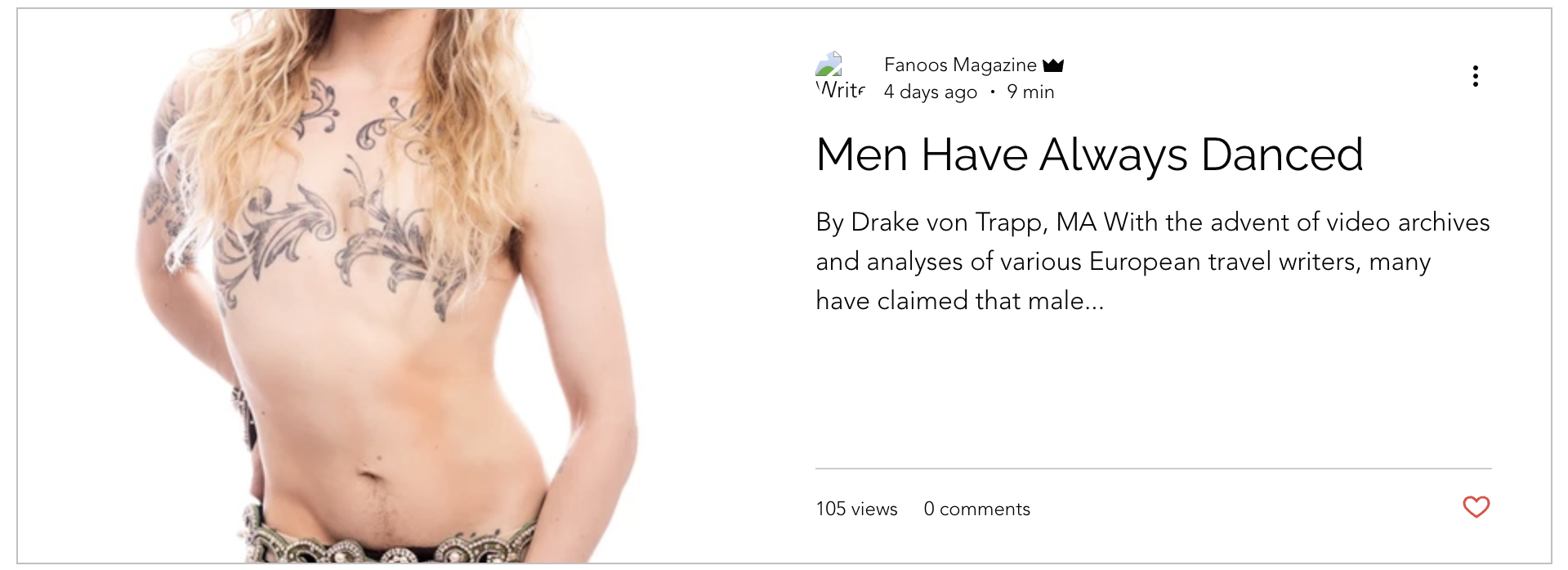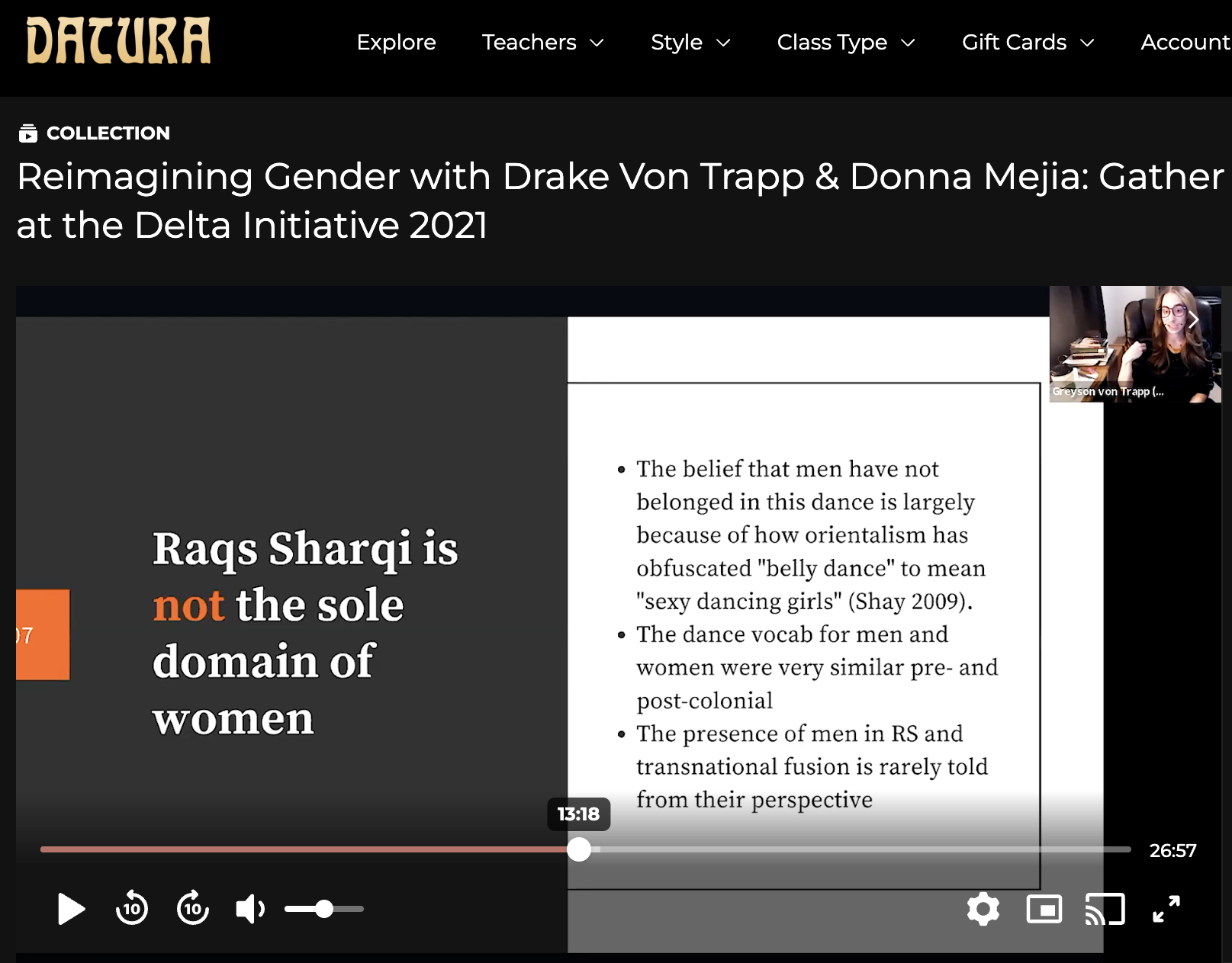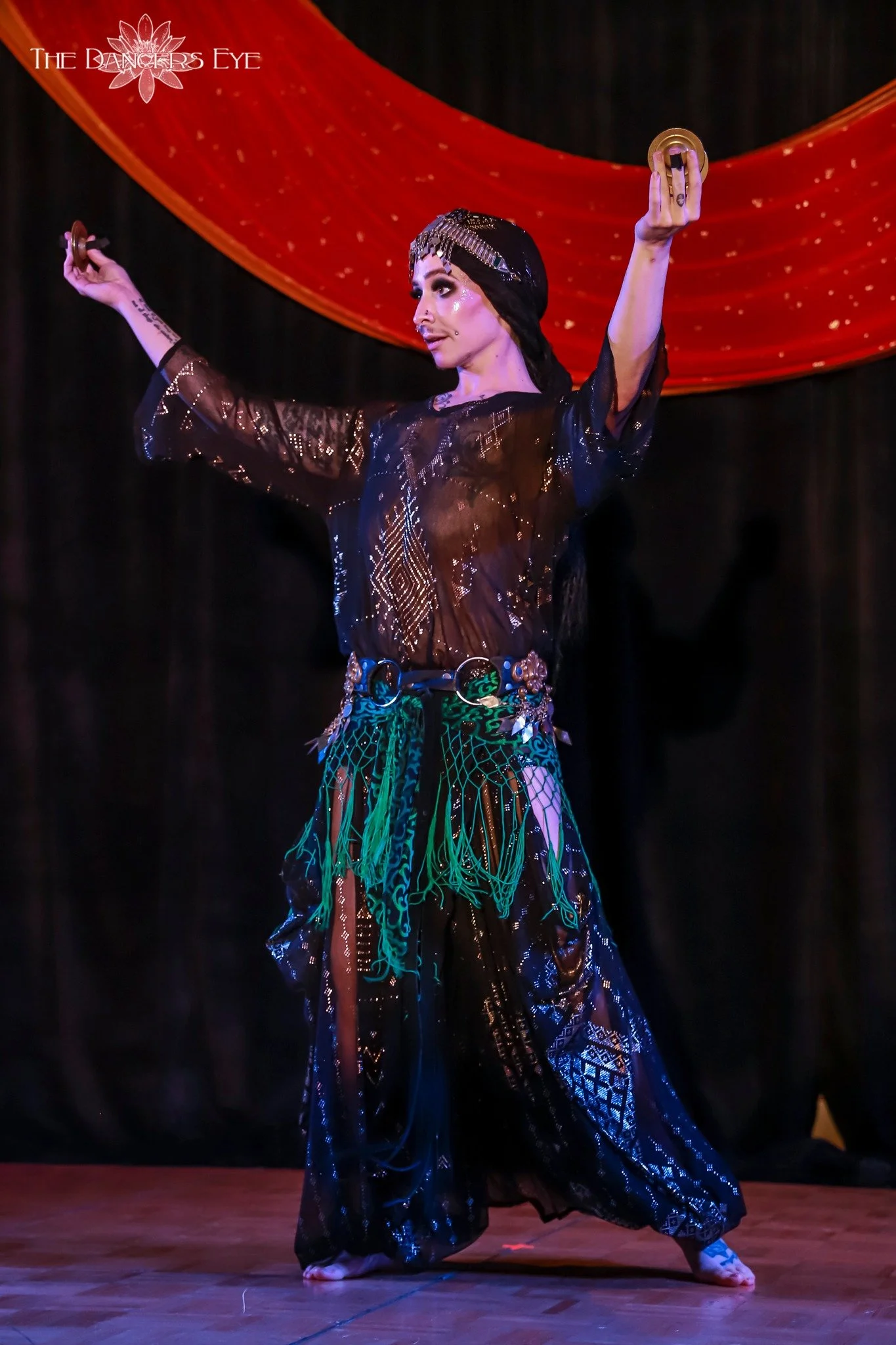Men in Belly Dance
5-part lecture series based on my thesis research for my MA in dance.
Available in 1 or 2 payments
1 payment of $200
2 payments of $100
Explore the history of belly dance in the United States
Orientalism, masculinity, and gender performance
Get comfortable getting uncomfortable while we unpack the relationship between John’s performance of masculinity, choreographic embodiment, and Orientalism.
Influences and future research
We will finish the series by discussing how John's legacy lives on in the contemporary belly dance community, and the future of this research.
The history of male belly dancers in the US and Middle East
Learn about the misinformation that has circulated through belly dance discourses for centuries, and how modern research has combatted common myths and stereotypes about male belly dancers.
An oral history of John Compton, one of the most prolific male belly dancers in US history
Using John’s story, we will explore his decades-long career as a dancer and teacher, and discuss the impact his work had on the belly dance community and fusion belly dance at large.
Testimonials
-

I enjoyed learning more about the role and contributions of male belly dancers. Coming from a more Egyptian style, and trained background, this 100% confirms what my professor Hassan Khalil has shared. Male choreographers such as Ibrahim Akef deserve mention and credit for the boom of the Golden Era aesthetic that became so popular. Your thesis was all engaging, the impersonation portion was something I’d like to dive deeper into. From the western perspective, male display of “feminine” attribute that define our dance are seen as impersonation, but the book you mentioned challenges that, I’d like to know more. I was mostly surprised by how a career ending in 2012 required oral traditional research. Wow! Things have changed so fast and thanks to researchers like you we can be better informed. Thank you for acknowledging the gaps in understanding and not discrediting John for not knowing what was not known. This is a very inspiring jump point to dive deeper into our history here in the US and continue to educate ourselves on the traditions and ever evolving dynamics of this dance at the source.
- Sadie (she/her)
-

This presentation was a wonderful mix of focus, facts, and emotion. Drake’s admiration for John shone through. The firsthand stories and beautifully edited video gave us a feel for John Compton, his influence on the belly dance community, his lasting legacy, but also the person he was and his journey from a student to icon. Drake’s research and open presentation style gave us the opportunity to make our own decisions about the choices John made within the time and place he was dancing. By collecting the oral history, Drake has given future historians the opportunity to retell John's story, and preserved part of the American Belly Dance Fusion development. I believe this presentation provided not only an entertaining and educational glimpse into John Compton, as a dancer, but also a much needed example of how research into dance, and belly dance, should be captured.
- Sara Shrapnell (she/her)
-
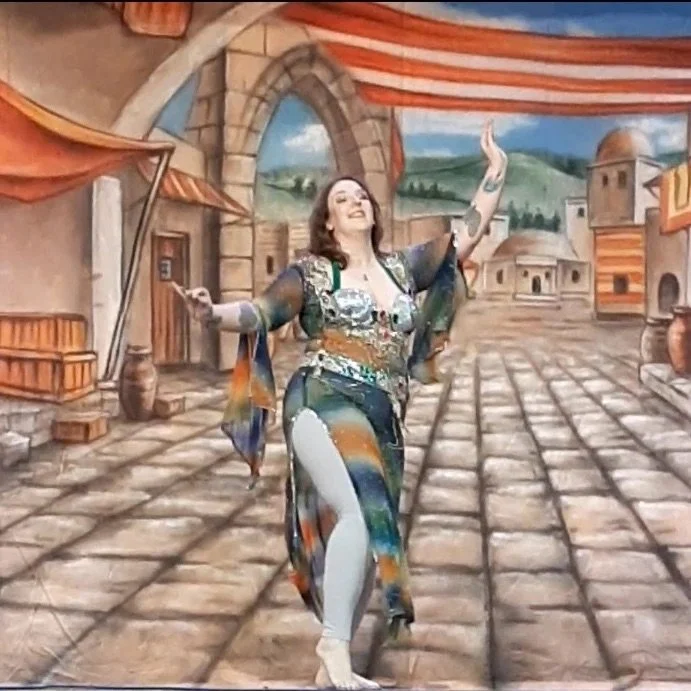
I absolutely loved the presentation. I've been a part of the belly dance community for 20 years, and knew very little about John Compton. It was fascinating to find that he hadn't studied for very long prior to jumping into performing and teaching, although I knew it was common for the time frame. I particularly loved hearing your comments about the simplicity in his dancing, and how you've taken that to heart, that you don't have to layer all the things to be an impressive performer...you don't have to cram all the moves you know into one performance. I would love to read or hear more of your insights, not just on John Compton, but on the other influential male bellydancers in America. I think more people need to be educated on the fact that men have been doing this dance, and that it's not just by women/for women. I absolutely appreciated when you discussed and disputed the mother/Goddess fakelore that has circulated for decades.
- Mina Mac Gabhann (she/they)

Engage in belly dance discourses more thoughtfully, curiously, and from a more informed place.
Knowledge is power.
In addition to exploring my research, I’ll be discussing how I utilized critical theory to interpret my research findings.
Learning how to use critical theory is incredibly empowering as a researcher and learner.
This lecture series is the most
Extensive
compilation of information on men in belly dance.
US belly dance history
Men’s and masculinity studies
Multiple masculinities theory
Multiple Orientalisms theory
Orientalist critique
Oral history and other qualitative methodologies
Movement analysis
Archival research
Reparative and emancipatory practices
Anti-racism
Colonialism
Imperialism
White supremacy
Islamophobia
Gender discrimination
Myth busting
Why I do this research
As a male belly dancer, I never saw myself represented with dignity and integrity in the historical record. The “history” of male belly dancers is often distorted and told from the perspective of those who hold biases and prejudices again male dancers, or who are just plain uninformed about our real history.
I felt left out, misrepresented, and cast as either an interloper or an imitator.
So I decided to create the work I wanted to see in the world, first with my undergraduate thesis “Masculinity in American Belly Dance,” and then with my master’s thesis, which built off that blueprint and took a much deeper, more critical dive in our history.
Men are not “guests” in this dance—we belong here.
Testimonials
-
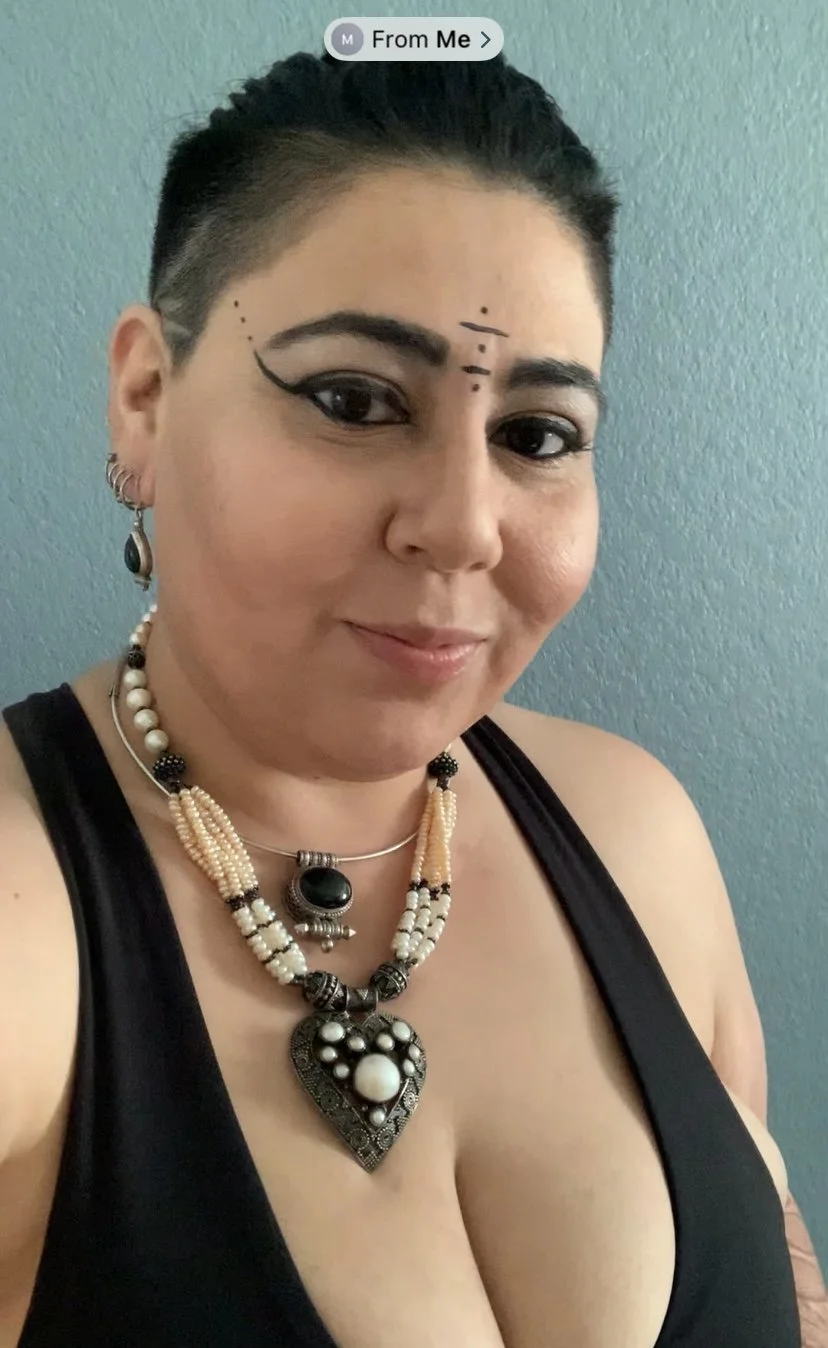
I went into this class as an impulse decision. After the first 15 minutes, I knew I was in the right place. My dance journey has been a combination of emulating historic dancers while trying to express a non-binary identity. Seeing how dancers of the past navigated the same choppy waters was validating on multiple levels. Beyond the validation, I found myself diving deeper into references the class introduced to me. Overall, I would say this class was a perfect combination of lecture and conversation.
-Khush
-

Reconstructing a beloved community figure's life and background through oral history without eulogizing or narrowly focusing on several aspects instead of providing a holistic vision of who they were as a person in their unique circumstances is already an arduous task. Reconstructing a queer person's life, the time in which they lived in, and the circumstances that led them to make the choices they did while trying to justify your presence in their former community and debunk long held myths while holding space for their complications and sharing overlapping identities with the figure you are researching makes it even harder.
Drake navigates these spaces within his thesis and the lectures presented here admirably, taking on the role of a public historian to the US bellydance community and presenting a thorough picture of John Compton's life. He contextualizes the socio-political climate of John's life and the history of male bellydancers around the world to explain John's choices while making it accessible to dancers and non-dancers alike. He spares no attention to detail, but guides you to ensure that you are not overwhelmed with the volume of information you need to understand and critique the materials in front of you alongside him.
John Compton' was a complicated man and a flawed human being, as we all are. His legacy cannot be understated, but his kindness, spirit of generosity, and dedication to his craft lives on in Drake von Trapp.
-Lior (they/them)
-
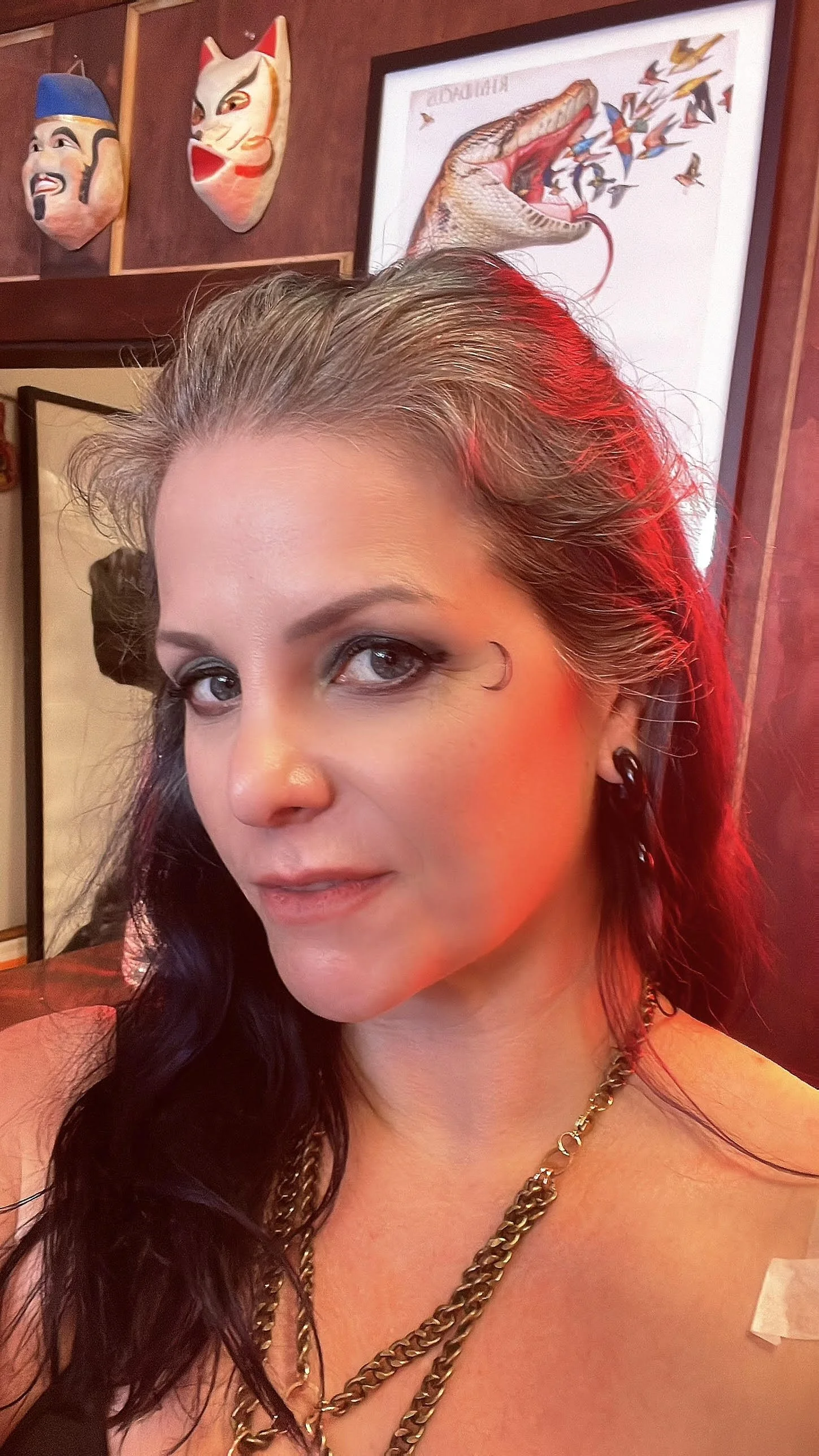
I have a background in academia and queer art and have been bellydancing since 1997. For decades, I have longed for more academic discussions around gender dynamics in bellydance and have been hungry for more "non-wishistory" information to fill my many knowledge gaps. I was taken aback by the profound level of research Drake has done, and I am so grateful he has. This course was rich with valuable information that I'm still processing and looking forward to having more conversations about. I hope the knowledge disseminated in this class will permeate our community, helping to correct and refine the misconceptions Westerners often harbor about bellydance. This course offers a nuanced and enlightening perspective on bellydance that anyone interested in this art form should consider. It's also just FUN and exciting (if you're a nerd like me).
-Allison Schulte (she/they)

Detailed outlines
Before class every week, I will upload the outlines, handouts, and slide presentation for you to download and follow along with during class.
Supplementary materials
Along with outlines and notes, I will send you reading lists and viewing material for each week to accompany the presentation.
Lively discussion
This is a seminar-style class, so there will be time throughout class each week for open discussion, question prompts, observations, and shared experiences.
Live & recorded lecture
Each week has a fully conceptualized curriculum and live presentation, which will be recorded and uploaded to the course module after each class. This allows dancers to join live, or catch up on their own time.
This lecture series is right for you whether you are new to belly dance history, or an experienced enthusiast.
"I'm new to belly dance research"
This class is packed with information that will give any emerging dancer a solid foundation in men's history in belly dance, as well as fusion belly dance history in the United States. Aspiring researchers and history enthusiasts will enjoy the tools I share in this series for evaluating sources, avoiding common mistakes, and critical analysis. This means you won't waste time reinventing the wheel or putting stock in debunked sources and information. Even if you've already pursued belly dance research on your own, this series will help you in whatever direction you choose to take with your education journey.
"I've done a fair amount of research before"
You're in the right place. I've had many dancers share how the information presented in my research exposed them to new perspectives and insights they hadn't encountered before, and invigorated their desire to seek out more information. I find that when learners come to me with a background in belly dance history, we find some unexamined biases that influence the way they embody new information, and unpacking this leads to a more fulfilling learning journey. If you're involved in belly dance history research, you will love incorporating these new perspectives into your current research practice.
My values
There is always something missing.
No matter how careful I am, no matter the amount of reading and research I’ve done, no matter how many people I’ve talked to, there will always be a perspective missing. All research is incomplete, and I am committed to remaining open and receptive to new perspectives and ways of knowing that are unfamiliar to me.
Lean into discomfort.
New information, heated discussion, and elucidating unsavory histories behind my research will sometimes make me feel uncomfortable, and may challenge my confidence in my own knowledge. I embrace discomfort, because the only way to get through it is to go through it, and I will be better off for it.
Lead with curiosity, not judgment.
In this age, it’s very common for information and ways of knowing to be assigned moral value in order to push one’s own agenda. Instead of looking at ideas or information as “good” or “bad,” I look at it with a sense of curiosity: Why does this person want to believe this? Who does this serve? What else could be true?
Who is this series for?
It’s for you if:
◈ You appreciate both scholarly sources and lived experience as sources of knowledge
◈ You respect the voices of those native to the source cultures
◈ You understand that there is no one "right answer"
◈ You value curiosity
◈ You want to challenge problematic patterns in our history
◈ You want to listen generously
◈ You want to reflect on your own misunderstandings and analyze how you know what you know
◈ You are a serious student
◈ You are an experienced researcher ready to explore new critical theories and perspectives
It’s not for you if:
Ⓧ You don't value anecdotal evidence
Ⓧ You privilege colonial voices
Ⓧ You always want to be "right"
Ⓧ You are only looking to confirm your own biases
Ⓧ You do not want to confront the racist, Orientalist patterns in our community
Ⓧ You don't want to reflect on your own past behavior and challenge how you know what you know
Ⓧ You want to play "Devil's advocate"
Ⓧ You do not want to read, watch documentaries, or watch dance videos
Ⓧ You don't want to learn and apply critical theory and analysis
Q&A
-
The series costs $200. You can pay it in full, or in 2 payments of $100.
-
All you need to join us is an internet connection and an open mind. While I do provide supplementary materials to help you get the most out of this experience, they're not required.
-
Each class will be about 90 minutes long.
-
I will be recording and uploading all the videos to the course module following the conclusion of class each week.
About me
I had always loved the belly dancers at the renaissance faire. After dropping out of high school, I could feel belly dance calling to me.
I have a BA and MA in Dance from Texas Woman’s University, and am currently a PhD student in Performance Studies at UT Austin. I also hold a post-master’s certificate in Multicultural Women’s and Gender Studies, along with several belly dance certifications through Dance Cohesion and the Salimpour School.
Research connected me more deeply to my belly dance practice, both as a physical practice and an intellectual pursuit.
I believe that knowledge is our most potent weapon against oppression, and when approaching learning with an open mind, a critical eye, and a curious ear, we can continue growing and learn to do better.
Check out my previous works
“Men Have Always Danced”
Fanoos Magazine Article
Public thesis defense
“Deconstructing and Reimagining Gender” Lecture
with Donna Mejia & Drake von Trapp on Datura
I’m so excited to meet you, think with you, and learn with you.
Explore the rich history of belly dance in the United States: Learn about the misinformation that has circulated through belly dance discourses for centuries, and how modern research has combatted common myths and stereotypes about male belly dancers. We will learn about the impact of several formative male belly dancers in the US and North America, such as John Compton, Bobby Farrah, Ahmad Jarjour, and Bert Balladine.

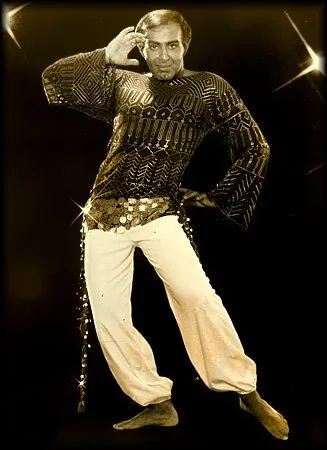
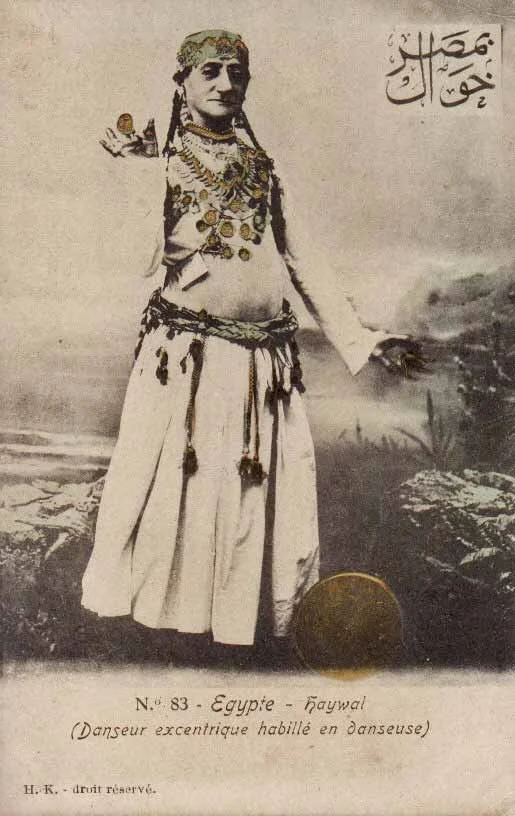
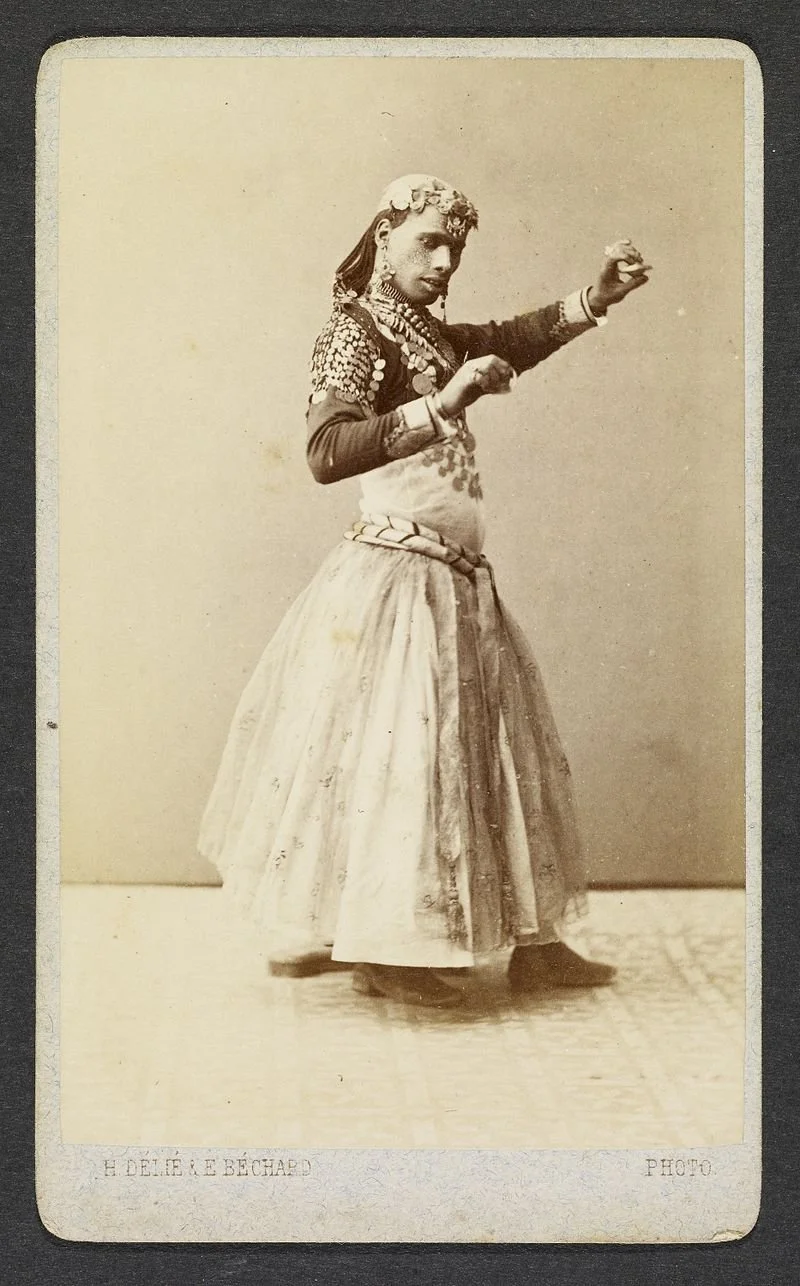
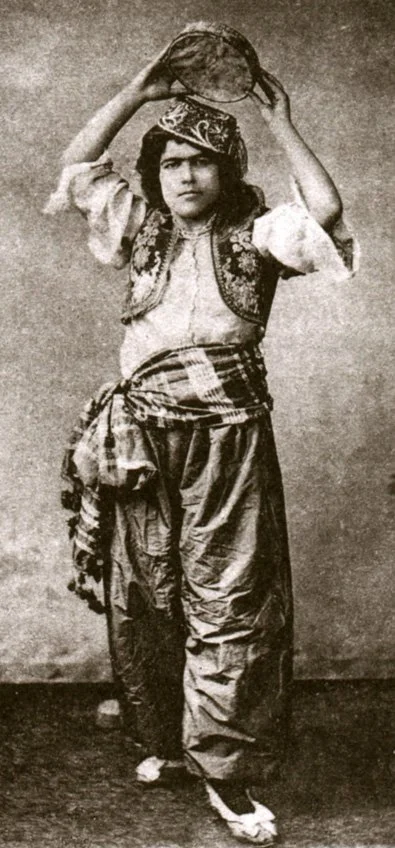

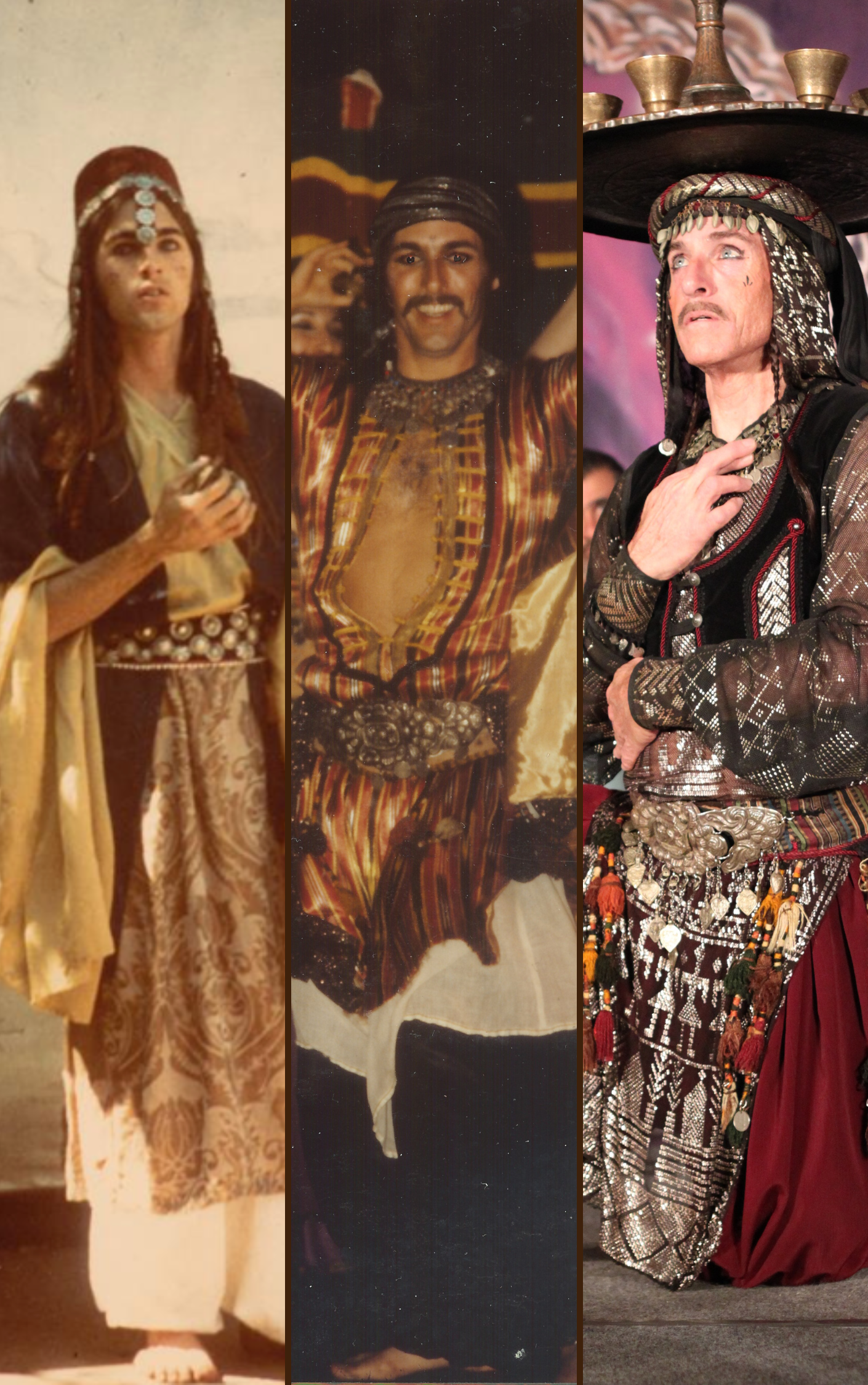










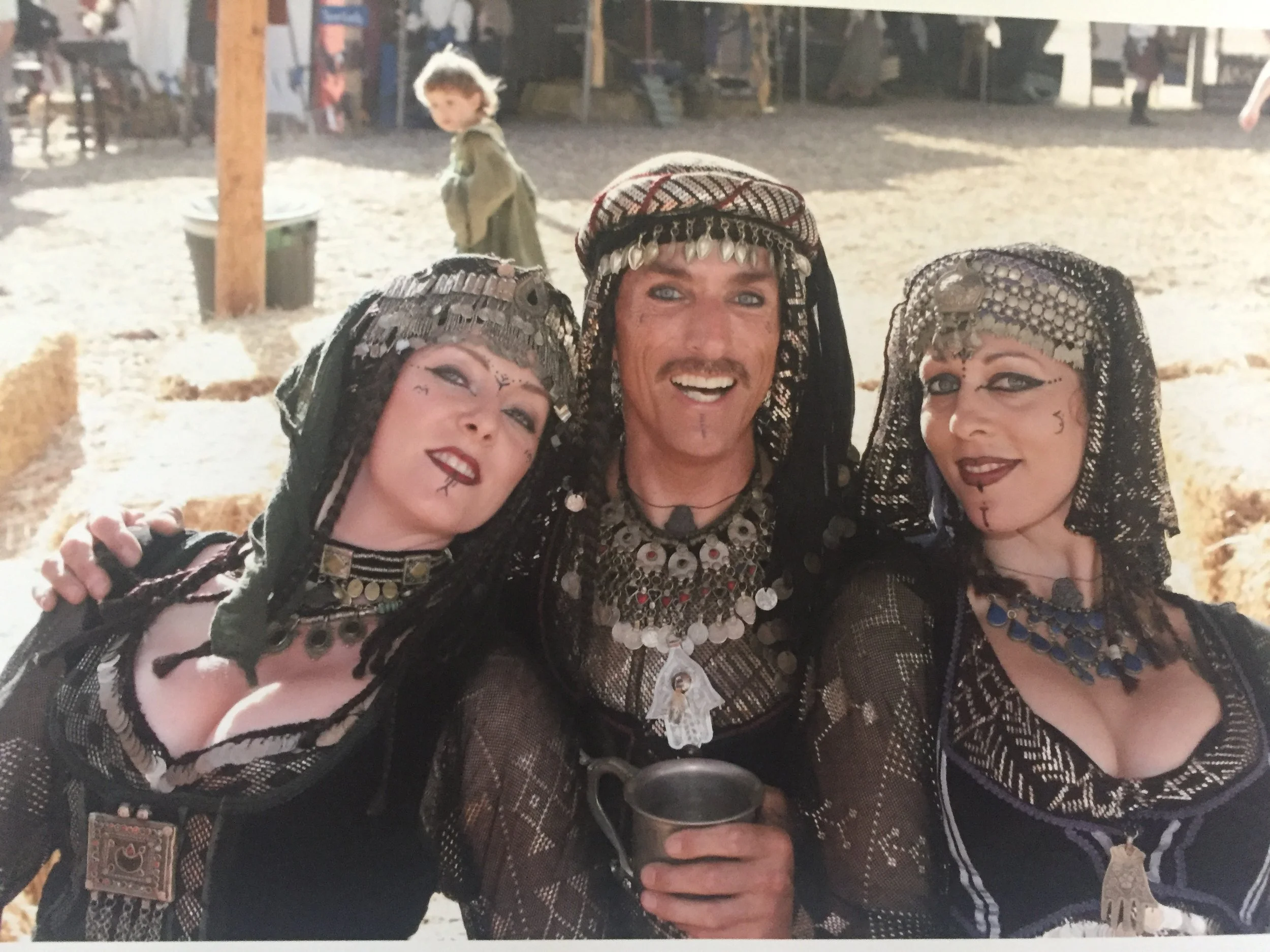
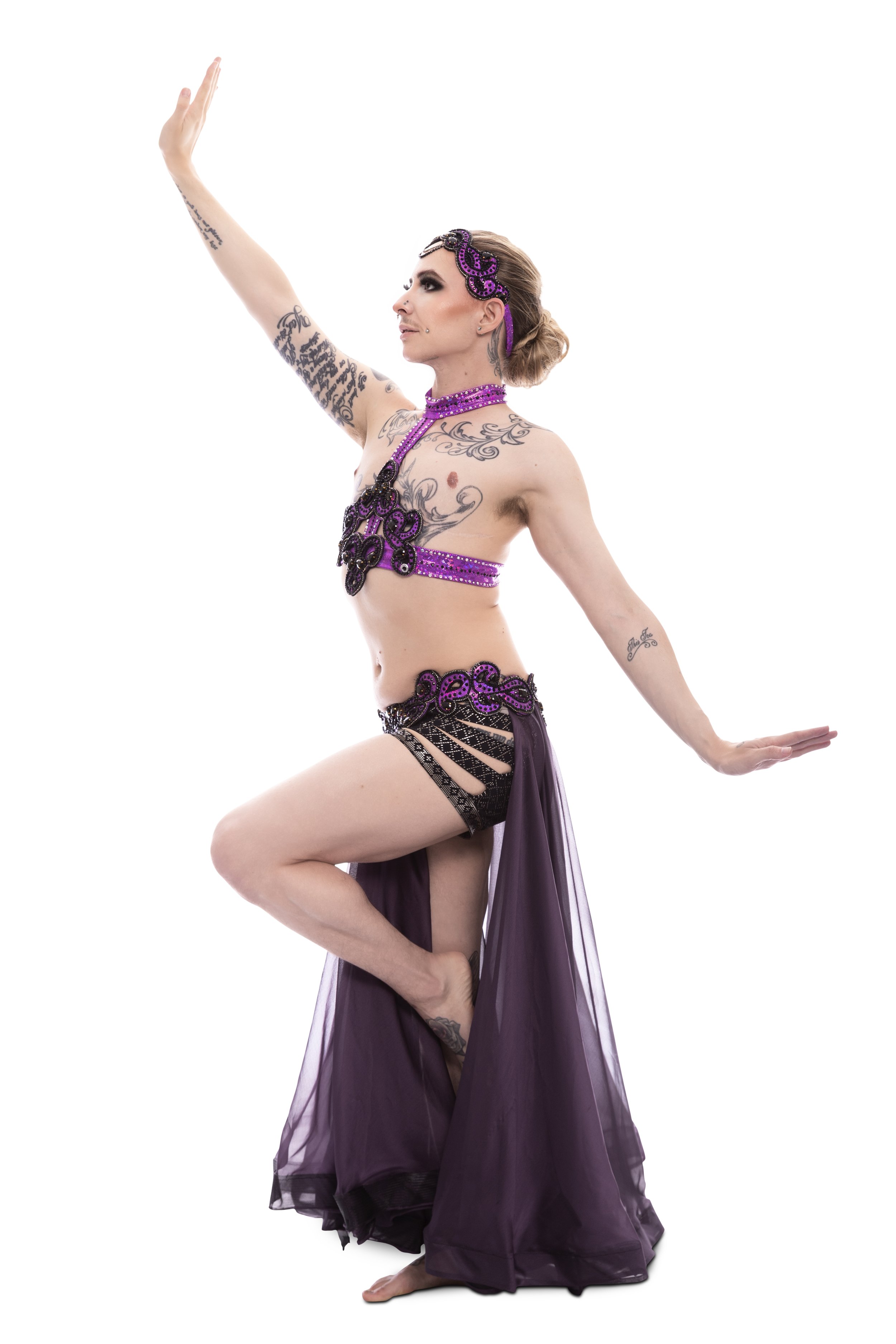

![From Bal Anat to Hahbi'Ru: An Oral History of John Compton, American Male Belly Dancer [PDF DOWNLOAD]](https://images.squarespace-cdn.com/content/v1/654d3998b4779b0c6492b8c4/1699620672298-TUSI1I3KADS7C2EHSVEZ/8.png)


